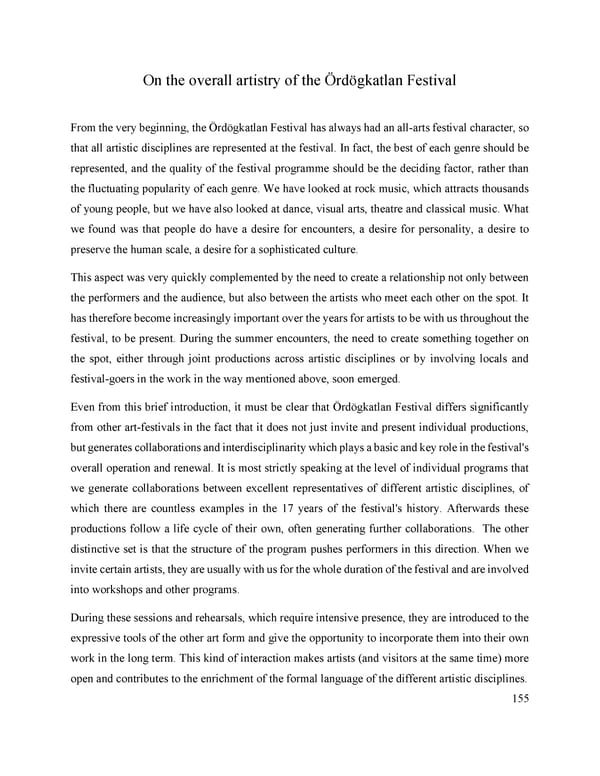On the overall artistry of the Ördögkatlan Festival From the very beginning, the Ördögkatlan Festival has always had an all-arts festival character, so that all artistic disciplines are represented at the festival. In fact, the best of each genre should be represented, and the quality of the festival programme should be the deciding factor, rather than the fluctuating popularity of each genre. We have looked at rock music, which attracts thousands of young people, but we have also looked at dance, visual arts, theatre and classical music. What we found was that people do have a desire for encounters, a desire for personality, a desire to preserve the human scale, a desire for a sophisticated culture. This aspect was very quickly complemented by the need to create a relationship not only between the performers and the audience, but also between the artists who meet each other on the spot. It has therefore become increasingly important over the years for artists to be with us throughout the festival, to be present. During the summer encounters, the need to create something together on the spot, either through joint productions across artistic disciplines or by involving locals and festival-goers in the work in the way mentioned above, soon emerged. Even from this brief introduction, it must be clear that Ördögkatlan Festival differs significantly from other art-festivals in the fact that it does not just invite and present individual productions, but generates collaborations and interdisciplinarity which plays a basic and key role in the festival's overall operation and renewal. It is most strictly speaking at the level of individual programs that we generate collaborations between excellent representatives of different artistic disciplines, of which there are countless examples in the 17 years of the festival's history. Afterwards these productions follow a life cycle of their own, often generating further collaborations. The other distinctive set is that the structure of the program pushes performers in this direction. When we invite certain artists, they are usually with us for the whole duration of the festival and are involved into workshops and other programs. During these sessions and rehearsals, which require intensive presence, they are introduced to the expressive tools of the other art form and give the opportunity to incorporate them into their own work in the long term. This kind of interaction makes artists (and visitors at the same time) more open and contributes to the enrichment of the formal language of the different artistic disciplines. 155
 Lost Analogue: Exploring Film, Music, and Interdisciplinary Methods in Education Page 155 Page 157
Lost Analogue: Exploring Film, Music, and Interdisciplinary Methods in Education Page 155 Page 157